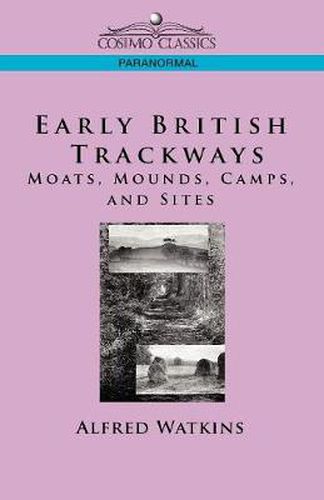Readings Newsletter
Become a Readings Member to make your shopping experience even easier.
Sign in or sign up for free!
You’re not far away from qualifying for FREE standard shipping within Australia
You’ve qualified for FREE standard shipping within Australia
The cart is loading…






This title is printed to order. This book may have been self-published. If so, we cannot guarantee the quality of the content. In the main most books will have gone through the editing process however some may not. We therefore suggest that you be aware of this before ordering this book. If in doubt check either the author or publisher’s details as we are unable to accept any returns unless they are faulty. Please contact us if you have any questions.
These-if ancient-seem to be invariably on (not merely alongside) a ley, and in many cases are at the crossing of two leys, thus appropriating the sighting point to a new use. -from Churches Were the significant sites of ancient Britain deliberately aligned along an invisible web of power? Or is it a mere coincidence that so many locations associated with worship and arcane knowledge are situated in unique spatial relationship to one another? Self-taught photographer and anthropologist Alfred Watkins was the first to discover the ley lines apparently connecting the churches, megaliths, earthen mounds, holy wells, and other places of power in Britain, and he published his results in this 1922 book. Though he offers no extraordinary explanation of their meaning-except, perhaps, that the leys represent ancient trade routes-others have associated ley lines with UFOs, crop circles, dowsing, and other paranormal phenomena. Long out of print, this foundational work is a vital resource for students of the supernatural. British photographer and amateur archaeologist ALFRED WATKINS (1855-1935) was a fellow of the Royal Photographic Society and served as president of the Woolhope Naturalists’ Field Club in 1919. He also wrote The Old Straight Track (1925) and The Ley Hunter’s Manual (1927).
$9.00 standard shipping within Australia
FREE standard shipping within Australia for orders over $100.00
Express & International shipping calculated at checkout
This title is printed to order. This book may have been self-published. If so, we cannot guarantee the quality of the content. In the main most books will have gone through the editing process however some may not. We therefore suggest that you be aware of this before ordering this book. If in doubt check either the author or publisher’s details as we are unable to accept any returns unless they are faulty. Please contact us if you have any questions.
These-if ancient-seem to be invariably on (not merely alongside) a ley, and in many cases are at the crossing of two leys, thus appropriating the sighting point to a new use. -from Churches Were the significant sites of ancient Britain deliberately aligned along an invisible web of power? Or is it a mere coincidence that so many locations associated with worship and arcane knowledge are situated in unique spatial relationship to one another? Self-taught photographer and anthropologist Alfred Watkins was the first to discover the ley lines apparently connecting the churches, megaliths, earthen mounds, holy wells, and other places of power in Britain, and he published his results in this 1922 book. Though he offers no extraordinary explanation of their meaning-except, perhaps, that the leys represent ancient trade routes-others have associated ley lines with UFOs, crop circles, dowsing, and other paranormal phenomena. Long out of print, this foundational work is a vital resource for students of the supernatural. British photographer and amateur archaeologist ALFRED WATKINS (1855-1935) was a fellow of the Royal Photographic Society and served as president of the Woolhope Naturalists’ Field Club in 1919. He also wrote The Old Straight Track (1925) and The Ley Hunter’s Manual (1927).